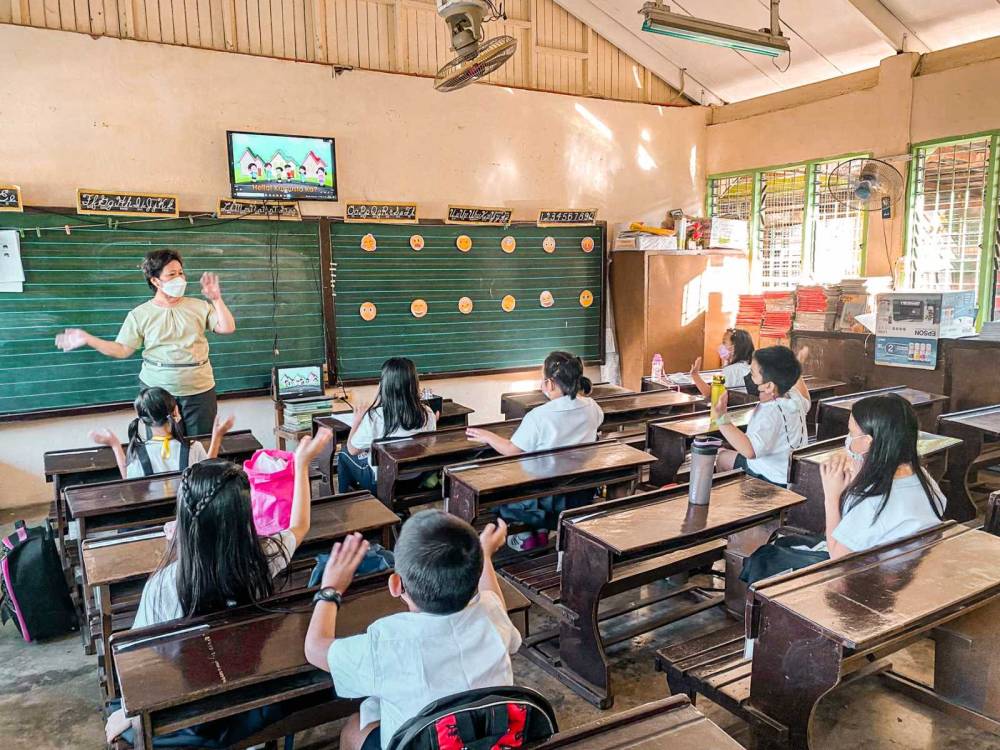
Concepcion: Reforms Needed To Prevent A Repeat of Vax Expiry
August 1, 2022
Go Negosyo Lauches “ISA PA” Campaign for Booster
August 8, 2022
One Giant Step Back to Normal
This August, 13 million schoolchildren will return to the classrooms. Not online, but in person. This includes my youngest daughter, Bella, so I understand completely all the parents whose children will return to the schools and back to some semblance of life before COVID.
It will be the end of the longest period a country in the Asia Pacific has kept its schools closed. There were plenty of reasons to close the schools back in March 2020. We knew very little about COVID-19 – only that it was highly transmissible and that it can cause serious illness in those infected. Later on, we found that it can be transmitted through the air we breathe, making stronger the case for limiting interactions in closed spaces such as classrooms. The emergence of variants and subvariants further delayed school openings.
The obvious workaround was to shift to online classes. It was thought to be a natural fit for children. They were more adept at technology and could adapt to the new way of learning. But it was not to be as easy for all. Internet access in the Philippines remains inadequate, and not all families could afford computers or smartphones.
At our mentoring sessions for aspiring entrepreneurs, it was common to hear how some parents turned to entrepreneurship because they needed additional income to pay for the gadgets their children needed to participate in remote learning.
There were happy stories, too. One young man I mentored at our last 3M on Wheels mobile mentoring session found that he could recruit his idle schoolmates to become his franchisees for his fledgling burger business. He tapped into their creativity by letting them brand the burgers he made at a central commissary he ran from his mother’s kitchen and delivered to their individual stands in the neighborhood. Needless to say, the return to in-person classes put the brakes on his operation, but he is not totally unhappy about it.
Early on, our economic planners have warned of the negative effects of school closures. Some 865 private schools reportedly closed down during the pandemic. In malls, school supplies stores hardly had any customers and for two years, the same inventory of school bags, notebooks and pencil cases sat on the shelf. At Manila’s university belt, carinderias saw their revenue drastically reduced, as did the dormitories, laundromats and sari-sari stores that used to cater to hundreds of thousands of students. Buses, jeeps, tricycles, and pedicabs weren’t spared, either.
In university towns in the provinces, the effect was even worse. Entire local economies relied on the regular influx of students to bring in revenue. Indeed, the multiplier effect of schools cannot be underestimated. Children younger than 15 years account for 30 percent of the Philippine population. Many businesses are built around schools remaining open, and most of these businesses are MSMEs.
In 2020 alone, the amount of losses due to school closures is estimated to be around P 230 billion. The long-run total cost on human capital investment and returns, in terms of education alone, is estimated by NEDA to be in excess of P 11 trillion over a 40-year period due to losses in future wages and productivity.
The 2020 losses are attributed to private school teachers losing their jobs, and parents who forgo or reduce work to attend to their children during homeschooling. It could be more if you count the numerous MSMEs who have had to close shop.
The economic cost of school closures extends even to large businesses. The productivity of the workforce went down as working parents had to care for their children at home. NEDA found that almost 60 percent of families have at least one working parent who had to skip work to supervise their children with their learning modules and make sure they paid attention during the online classes. This places so much pressure on the productive members of our workforce, who, by the way, still need to keep themselves from getting COVID as they go to work everyday.
P 11 trillion represents the long-term effects of the school closures on lower future income, productivity, and competitiveness. Based on ADB estimates, each year of lost schooling translates to around 10 percent permanent lower wages in the future. This means the pandemic and school closures are exacerbating the already unequal access and lower quality of education in the Philippines, and down the line the gap between the haves and have-nots.
With each school year lost, the socioeconomic divide widens even further. In 2021, the World Bank released a report called Remote Learning During COVID-19, where it found that children who belonged to families where the parents or caregivers themselves lacked any form of education were less likely to engage in learning. Indeed, how can a parent who is barely able to read, tutor or guide a child through his modules?
The government is not oblivious to the massive effect of school closures. There had been attempts to reopen back in November 2021, but as we now know, the one thing we do know about COVID is that it is unpredictable. The planned reopening had to be shelved as the Omicron variant began its rampage and caused infections to rise and brought with it another wave of COVID cases in January 2022.
But now we know better. Thankfully, our elderly and some middle-aged members of our workforce can now get extra protection through second boosters. Vulnerable kids can also get protected. By getting all eligible members of the family vaccinated, the family can form its own wall of immunity even as its members go out and rejoin classmates, teachers, officemates and friends.
The bottom line is, we have to move forward.

2/F RFM Corporate Center, Pioneer cor. Sheridan Sts. Mandaluyong City, Metro Manila, Philippines

